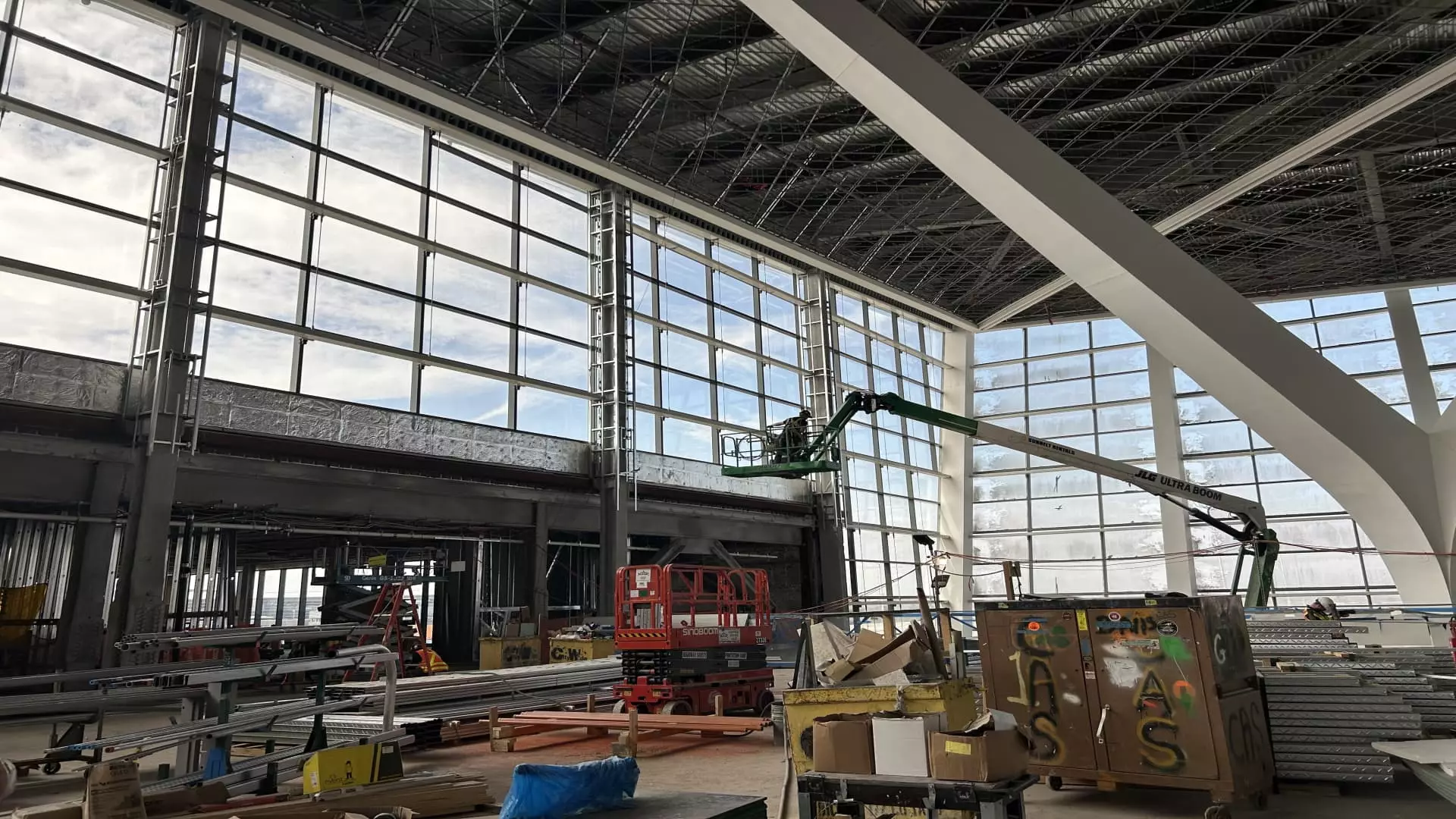John F. Kennedy International Airport is on the cusp of a transformative leap forward with the development of its new Terminal 1, a project infused with cutting-edge design, substantial investment, and a forward-looking vision of international travel. With a massive budget of $9.5 billion, this terminal aims not merely to overhaul infrastructure but to redefine the passenger experience at one of the busiest gateways in the world. As the first phase nears completion, set for mid-2026, it signifies a bold response to the escalating demands of global air travel and a strategic move to elevate New York City’s airport stature on the world stage.
What stands out about this project is its scale and focus. Unlike typical expansions, JFK’s Terminal 1 is conceived to be the largest terminal in JFK’s history—comparable in size to the combined new LaGuardia terminals—dedicated exclusively to international travelers. This specialization exemplifies a targeted strategy: creating a purpose-built hub that streamlines customs, arrivals, and departures for long-haul passengers, making their journey seamless and efficient. The project shows an understanding that modern travelers seek speed, comfort, and aesthetic appeal, and its design reflects a commitment to meeting those expectations.
Design that Embodies Light, Openness, and Functionality
The architectural vision behind Terminal 1 is both innovative and user-centric. Guided by the architecture firm Gensler, the design mimics the form of a butterfly, with a split body that defies conventional terminal shapes. The choice to prioritize natural light is deliberate, creating a space that is airy, welcoming, and free from the claustrophobic corridors typical of outdated airport designs. Large, slanted windows dominate the structure, flooding the interior with daylight, thereby reducing reliance on artificial lighting and fostering a calming atmosphere for travelers.
Furthermore, the terminal’s layout emphasizes efficiency. Departures, arrivals, security, and customs are all consolidated on the same level, eliminating the often frustrating maze of underground or multi-level processes. This sophisticated zoning enhances flow and reduces wait times—an essential feature when accommodating a projected capacity of 14 million passengers annually. The emphasis on simplicity and transparency signals a shift in airport design philosophy: passenger comfort and convenience are paramount, and engineering solutions are crafted to support those values.
Strategic Location and Connectivity Enhance Future Operations
Complementing the terminal itself is an extensive network of infrastructure improvements, including enhancements to the AirTrain system and surrounding roadways. The AirTrain seamlessly integrates the new terminal with JFK’s broader transportation network, ensuring that travelers can transition between rail, road, and air with minimal hassle. These connectivity improvements are vital, especially since the airport serves as the primary international gateway for the region, handling an influx of diverse international airlines, from Turkish Airlines to China Airlines.
The timing of the opening—coinciding with the 2026 World Cup—further underscores the strategic thinking behind the project. Hosting major international sporting events demands world-class infrastructure capable of handling surges in passenger volumes. JFK’s new Terminal 1 is designed with this in mind, featuring the capacity to serve large wide-body aircraft, the workhorses of long-distance international flights. The future expansion plans for additional gates and space demonstrate a commitment to scalability and resilience, ensuring the facility can adapt to the evolving landscape of global air travel.
Reimagining Retail and Customer Experience
One of the most exciting innovations within Terminal 1 lies beneath the traditional expectations of airport retail. With over 300,000 square feet dedicated to dining, shopping, lounges, and recreational spaces, the terminal promises an environment that looks more like a luxury shopping mall than a transit hub. Notably, the introduction of a unique duty-free shopping concept—cash-and-carry—aims to enhance convenience and appeal to savvy travelers. Instead of waiting until arrival, passengers can purchase duty-free items on the day of their flight and leave with their goods immediately, streamlining the shopping experience.
This focus on customer experience is emblematic of a broader industry trend—airports increasingly compete on comfort, retail offerings, and amenities to differentiate themselves. JFK’s investment reflects the understanding that airports must serve dual roles: gateways to destinations and destinations in their own right, capable of offering memorable experiences that justify premium services and spending.
The Future of International Travel at JFK
The development of Terminal 1 indicates a decisive shift toward an integrated, passenger-centered future for JFK. It signals a recognition that airports are more than just transit points—they are critical infrastructure that can influence tourism, commerce, and international relations. By focusing on aesthetics, efficiency, and service quality, JFK aims to solidify its position as a premier global hub capable of competing with some of the world’s best airports.
This project is ambitious, and while it may have faced delays and challenges inherent in constructing such a vast complex, the vision remains compelling. As construction progresses and the first phase opens its doors, the world will watch with anticipation whether JFK’s new terminal lives up to its promise of transforming the international travel experience into something extraordinary. It’s not just about bigger buildings or more gates—it’s about reshaping expectations, elevating standards, and pushing the boundaries of what an airport can be.


Leave a Reply